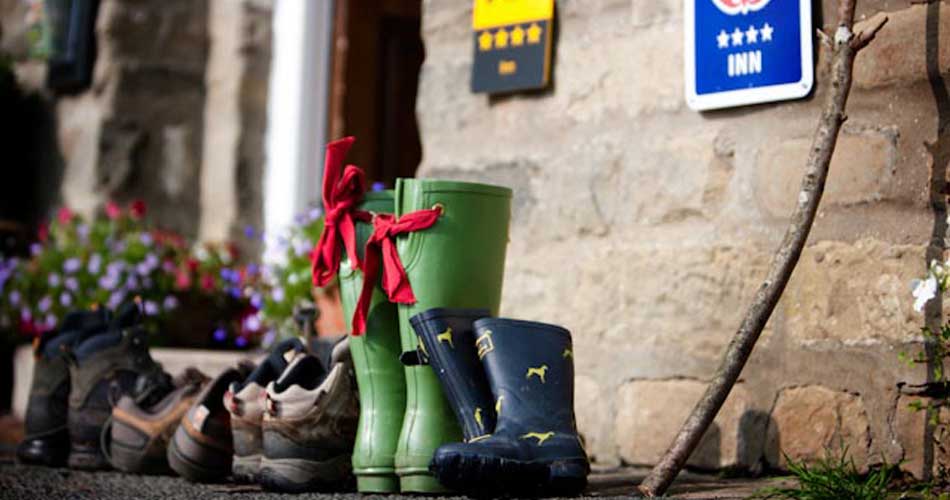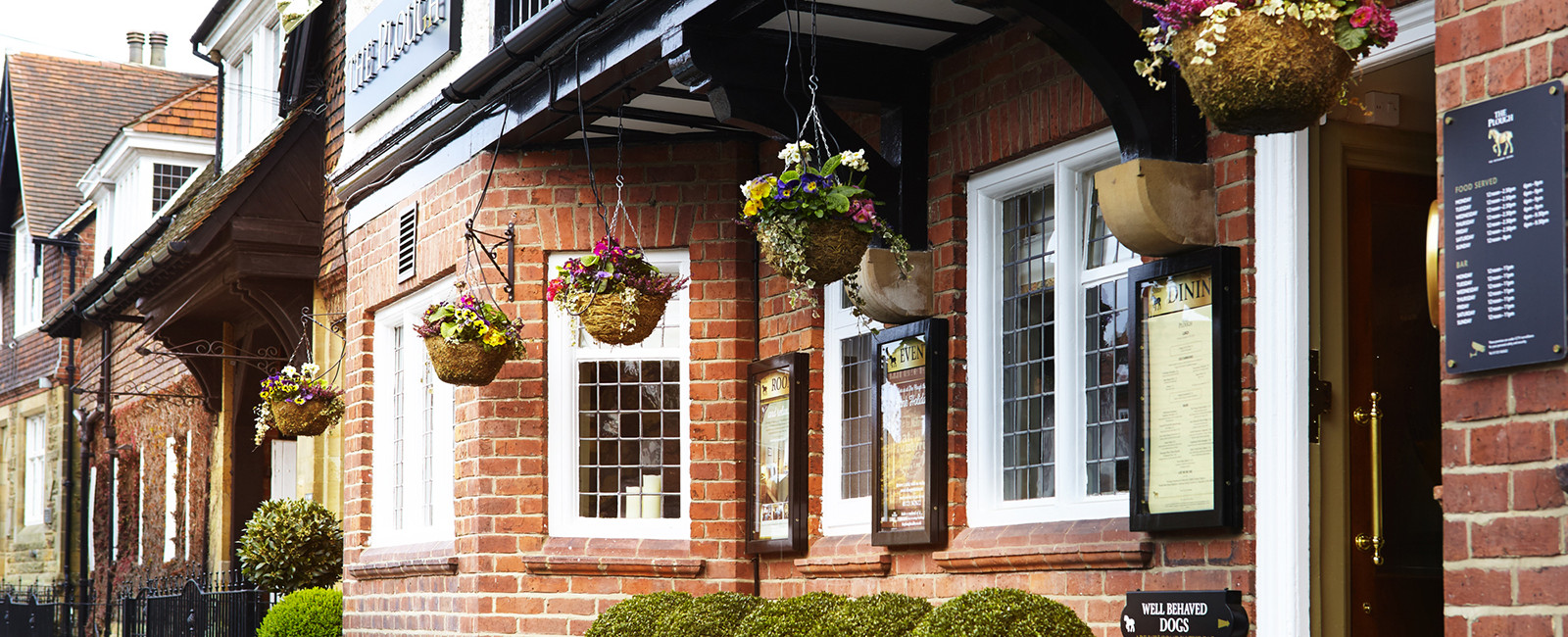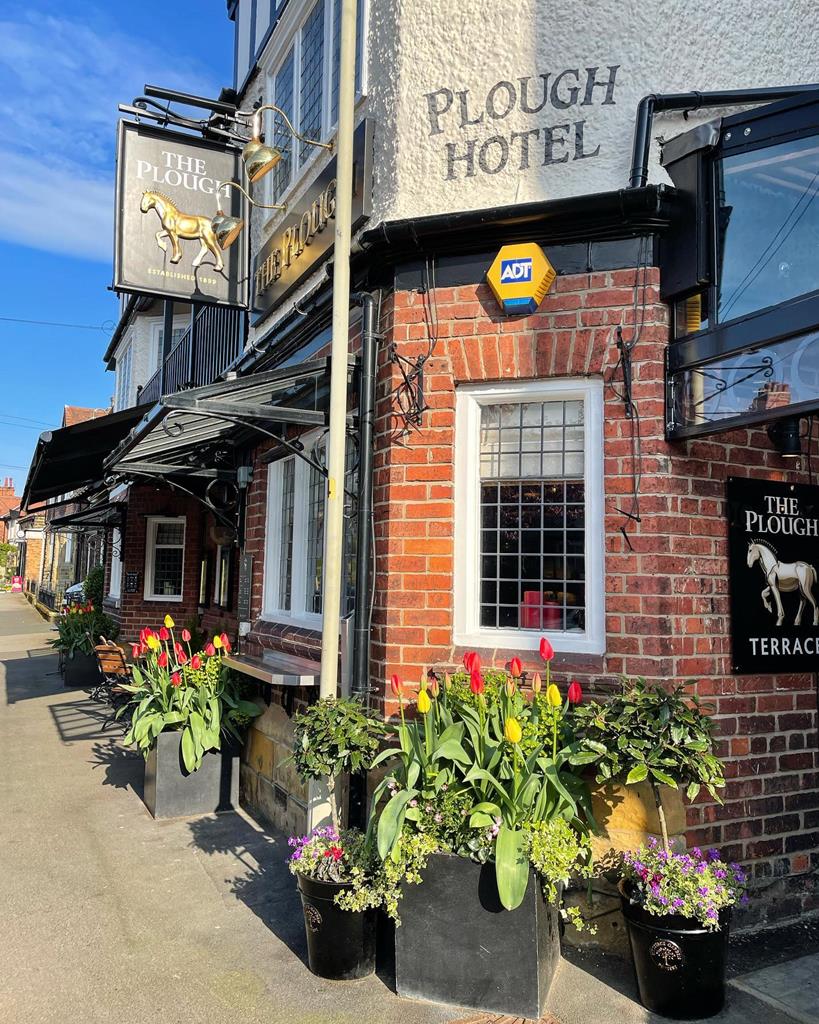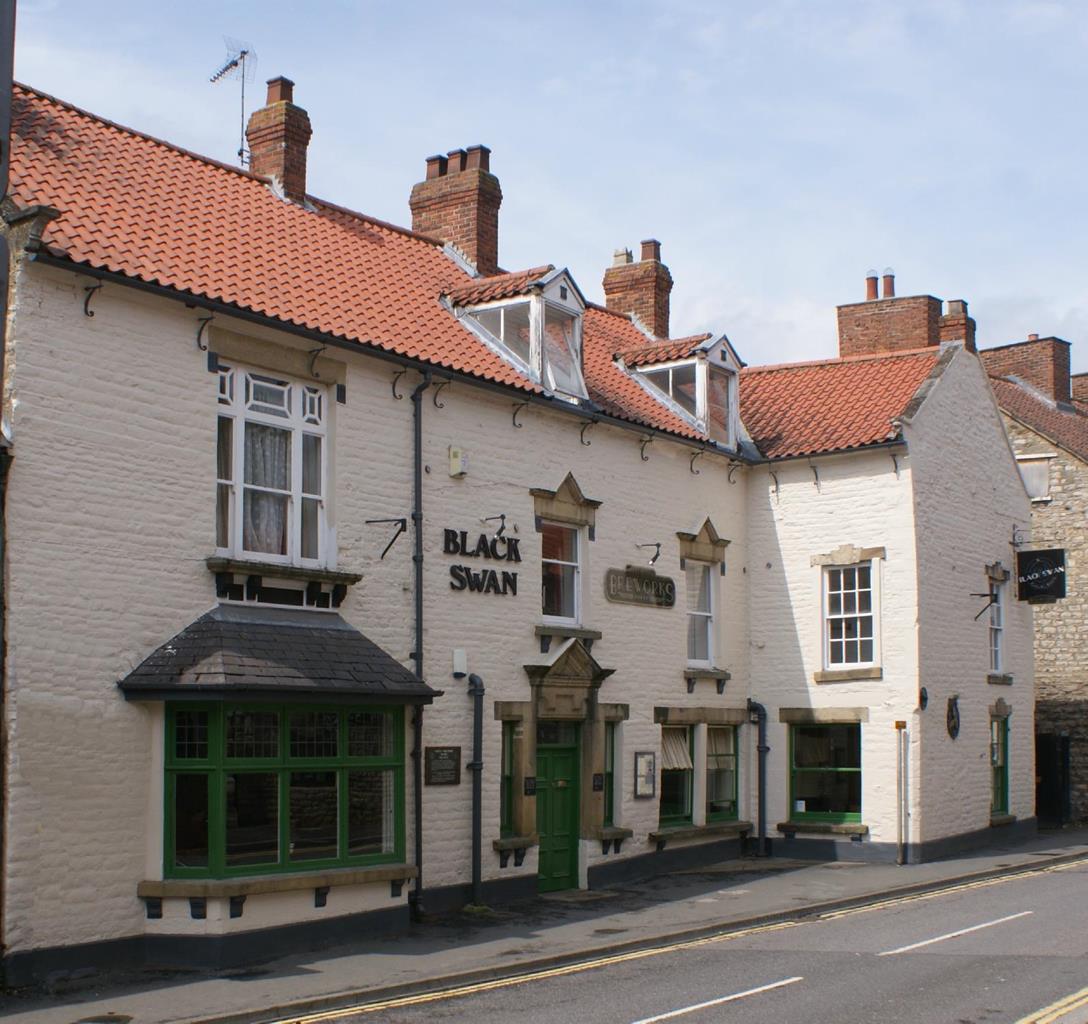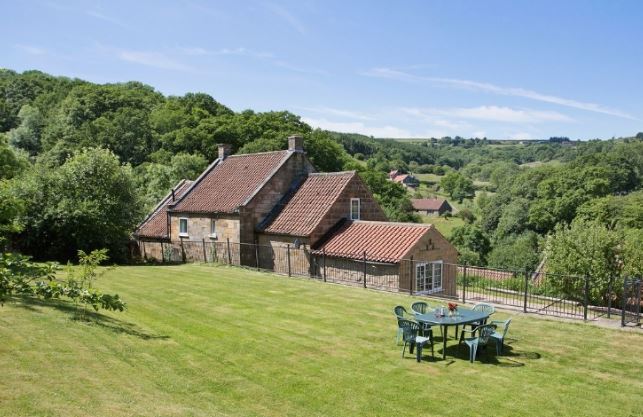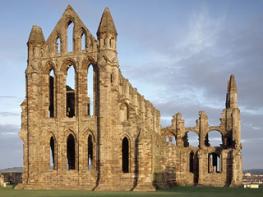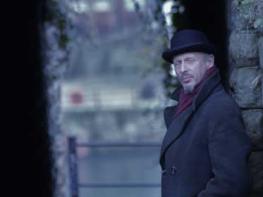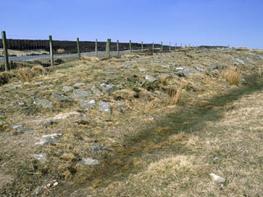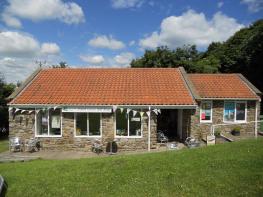Just an hour’s drive from the city of York, Kelp House is surrounded by walks and tiny villages…
From Littlebeck to Falling Foss

Walk through a secluded valley to a fabulous waterfall.
3.3 miles (5.3kms)
About the walk
Littlebeck is a descriptive name, although by the time it reaches the village, the Little Beck isn’t all that little any more. The Beck (from the Old Norse word bekkr, meaning stream) is formed by the joining of May Beck and Parsley Beck about a mile (1.6km) upstream. The confluence of the two becks is one of the prettiest spots on this walk, although it’s less spectacular than Falling Foss, where the May Beck spills almost vertically over a drop of 30ft (9m). It’s nowhere near the highest waterfall in Yorkshire, but it’s widely agreed to be one of the loveliest.
The approach to Falling Foss is through lush woodland in a deep, sheltered valley. Much of this is now a nature reserve administered by Yorkshire Wildlife Trust. It’s valued for its semi-natural oak woodland, which has been largely undisturbed for generations. The oldest trees are around 200 years old. Other tree species include ash, rowan, cherry and hazel, with many alders along the watercourses. Yet this was once an industrial site, and at one point the path climbs over the spoil heap of an old alum works.
The woodland is home to a wide range of plants, animals and birds; the bluebells and early purple orchids in spring are particularly spectacular. However, it is perhaps valued above all for its humid, sheltered micro-climate which supports many fungi, mosses and liverworts. Quiet walkers with the wind in their faces stand a good chance of spotting roe deer, and otters are sometimes seen, especially early and late in the day.
At Point 3 the route passes a huge boulder, the interior of which has been hollowed out to create a chamber large enough to seat a dozen people. Known as The Hermitage, its origin is somewhat obscure, though the initials GC and the date 1790 are inscribed above the doorway. Some accounts say that GC was one George Chubb, though whether he did the hard work or merely ordered others to do it is not clear. On top of the boulder are two chairs, also carved out of solid rock, and known as the wishing chairs. The story goes that if you make a wish in one chair, you must sit in the other to make your wish come true.
Walk directions
Walk down the hill. On a bend near the bottom go left through a gate at a footpath sign (‘Falling Foss and Coast to Coast’) and nature reserve sign. Follow the path through the woods above the beck. It crosses a bridge, then climbs wooden steps onto a mound of shale.
Descend more steps on the other side, and continue until a gap in a low wall marks the boundary of the nature reserve. Soon the path begins to climb, with some stone steps, to a terrace in front of The Hermitage.
Take the right fork. The path descends, with stone steps, past mossy boulders and back to the beck. Cross a footbridge over May Beck, but don’t cross a second footbridge over the other stream. Instead climb a bank between the two streams. Keep following the path, with some wooden steps and occasional waymarks, to a T-junction. Turn right to meet a wide track at a signpost.
Turn left down the track and at the bottom, before a bridge, go left through a parking area to a footbridge. Cross to Midge Hall and the tea garden. Falling Foss is behind.
Retrace your steps to the signpost at Point 4. Continue up the wide track, emerging from the woods to fields on the right. Keep right at a fork through gates to pass farm buildings, and continue to a signpost.
Turn right, signed as a bridleway, and follow the indistinct track along the edge of the field, then bear right along the edge of woodland to a gate marked ‘Leashead’. Cross a small bridge and follow the track to near Leashead Farm, then turn left at a sign for ‘Intake Farm and Littlebeck’.
Go over a stile and up the field to meet the farm track. Turn right and follow the track to a signpost. Go through the gate to its left and follow the track down the field edge to another gate, go through, then turn left along the hedge. Keep straight on, through another gate, until the hedge bends round and another gate leads to the edge of a wood.
Bear right on a green track along the edge of the wood. Follow the track as it descends through a gate into the nature reserve. Continue through the woods to cross a stream and join the lane in Littlebeck. Turn right and cross the ford (usually dry, but there’s a footbridge 30yds (27m) downstream), then climb the hill back to the car park.
Additional information
Some surprisingly rough and rocky woodland paths followed by easier, if sometimes muddy, fields
Deep, sheltered woodland and waterside giving way to open fields
Dogs can run free in the woods, but the second half of the walk is grazing land
OS Explorer OL27 North York Moors, Eastern Area
Car park beside Littlebeck Village Hall
None on route
<p>The best time to see Falling Foss is after heavy rain, but several of the paths can be muddy at such times</p>
WALKING IN SAFETY
Read our tips to look after yourself and the environment when following this walk.
Find out more
Also in the area
About the area
Discover North Yorkshire
North Yorkshire, with its two National Parks and two designated Areas of Outstanding Natural Beauty, is England’s largest county and one of the most rural. This is prime walking country, from the heather-clad heights of the North York Moors to the limestone country that is so typical of the Yorkshire Dales – a place of contrasts and discoveries, of history and legend.
The coastline offers its own treasures, from the fishing villages of Staithes and Robin Hood Bay to Scarborough, one time Regency spa and Victorian bathing resort. In the 1890s, the quaint but bustling town of Whitby provided inspiration for Bram Stoker, who set much of his novel, Dracula, in the town. Wizarding enthusiasts head to the village of Goathland, which is the setting for the Hogwarts Express stop at Hogsmeade station in the Harry Potter films.
York is a city of immense historical significance. It was capital of the British province under the Romans in AD 71, a Viking settlement in the 10th century, and in the Middle Ages its prosperity depended on the wool trade. Its city walls date from the 14th century and are among the finest in Europe. However, the gothic Minster, built between 1220 and 1470, is York’s crowning glory.
Nearby stays
Restaurants and Pubs
Nearby experiences
Recommended things to do
Why choose Rated Trips?
Your trusted guide to rated places across the UK
The best coverage
Discover more than 15,000 professionally rated places to stay, eat and visit from across the UK and Ireland.
Quality assured
Choose a place to stay safe in the knowledge that it has been expertly assessed by trained assessors.
Plan your next trip
Search by location or the type of place you're visiting to find your next ideal holiday experience.
Travel inspiration
Read our articles, city guides and recommended things to do for inspiration. We're here to help you explore the UK.


